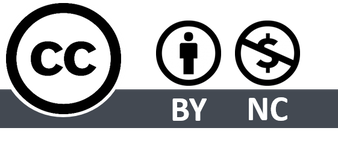AESTHETICS OF THE VIRTUAL CLASSROOM: VISUAL COMMUNICATION TECHNOLOGY, PARTICIPATION & HETEROCHRONOUS COMMUNAL TIME
Abstract
This article explores how immediate communication of synchronous education via virtual classrooms poses questions on implementing visual communication technologies of social surveillance. The striking global transformation of education to synchronous and asynchronous forms of online and hybrid education during the COVID-19 pandemic has reformed the usual teaching and learning methods. Hence, the immediate experience of virtuality also affected the public sphere notion of classrooms, where students socialize and encounter political culture. Building on the content analysis of qualitative research on student experiences of remote education in Turkey, we conducted an online survey with 325 university students with the purpose of understanding their experiences and attitudes toward online education. We theoretically explore how virtual classroom participants construct their social world of education through the aesthetic affordances of digital platforms. Grounded in critical theories of aesthetics that have previously been elaborated on an abstract level, we investigate how time and space compression, enabled by immediate communication technologies, translates into students’ experiences of participation, use of visual communication, and their everyday resistance to surveillance. The research revealed that online education design as implemented today is far from encouraging a public space, and the university students generally underestimate their role in creating a public space through their active participation in discussions. This loss of social spaces should be elaborated and problematized in the future for a better transition to hybrid and online education modules.
Supporting Institution
Kadir Has Üniversitesi
Project Number
Etik komite onay numara 5.02.2021-2384
Thanks
Part of the findings had been published previously in an article that the authors have cited in the bibliography: Akdemir, A, & Arda, B. (2022), Çevrimiçi Eğitimde Görsel İletişim: Sanal Sınıf Deneyiminde Kamera Kullanımının Toplumsal Analizi. 19 Mayıs Sosyal Bilimler Dergisi, 3(4), 344-357. This article focuses on different aspects of the findings and uses research-based theoretical analysis through the critical theory approach to communication technologies.
References
- Aagaard, J. (2022). On the dynamics of Zoom fatigue, Convergence, 28(6), 1878-1891.
- Akdemir, A., Arda, B. (2022). Çevrimiçi Eğitimde Görsel İletişim: Sanal Sınıf Deneyiminde Kamera Kullanımının Toplumsal Analizi, 19 Mayıs Sosyal Bilimler Dergisi, 3(4), 344-357.
- Albrechtslund, A. (2008). Online Social Networking as Participatory Surveillance. First Monday.
- Bartram, R. (2004). Visuality, Dromology and Time Compression: Paul Virilio’s New Ocularcentrism, Time & Society, 13(2-3), 285-300.
- Baudrillard, J. (1983). The ecstasy of communication, Foster, Hal (Ed.), in The Anti-Aesthetic: Essays on Postmodern Culture (2002) (126-133), New York: The New Press.
- Baudrillard, J. (1993). The Transparency of Evil: Essays on Extreme Phenomena, London: Verso.
- Baudrillard, J. (2005). The System of Objects (Vol. 3), London: Verso.
- Blaikie, N. (2011). Designing Social Research: The logic of Anticipation, Polity.
- Bossetta, M. (2018). The digital architectures of social media: Comparing political campaigning on Facebook, Twitter, Instagram, and Snapchat in the 2016 U.S. Election, Journalism & Mass Communication Quarterly, 95(2), 471-496.
Abstract
Bu makalede sanal sınıflar yoluyla eşzamanlı eğitimin sağladığı anında iletişimin, sosyal gözetimin görsel iletişim teknolojilerinin uygulanmasına ilişkin soruları nasıl ortaya çıkardığı incelenmektedir. Covid19 Pandemisi sırasında eğitimin eşzamanlı ve eşzamansız çevrimiçi ve hibrit yöntemlerle küresel ölçekte dönüşümü, olağan öğretme ve öğrenme yöntemlerini yeniden biçimlendirdi. Bu nedenle, anlık sanallık deneyimi, öğrencilerin sosyalleştiği ve politik kültürle karşılaştığı sınıflara ilişkin kamusal alan kavramını da etkiledi. Türkiye'deki uzaktan eğitim sürecindeki öğrenci deneyimleri üzerine yürüttüğümüz bu araştırmada nitel içerik analizine dayanarak, online eğitime dair deneyimlerini ve tutumlarını anlamak için 325 üniversite öğrencisi ile çevrimiçi anket yapılmıştır. Sanal sınıf katılımcılarının sosyal eğitim dünyalarını dijital platformların estetik olanakları aracılığıyla nasıl inşa ettikleri teorik olarak incelenmiştir. Daha önce kuramsal düzeyde ele alınmış olan eleştirel estetik teorilerine dayanarak, iletişim teknolojilerinin sağladığı zaman ve mekân sıkıştırmasının öğrencilerin derse katılım deneyimlerine, görsel iletişim kullanımına ve gözetime karşı günlük direnişlerine nasıl dönüştüğünü ortaya koymaktayız. Araştırma, günümüzde uygulanan çevrimiçi eğitim tasarımının kamusal alanı teşvik etmekten uzak olduğunu ve tartışmalara aktif katılım yoluyla kamusal alan yaratmadaki rollerini azımsadıklarını ortaya çıkarmıştır. Gelecekte hibrit ve çevrimiçi eğitim modüllerine daha iyi bir geçiş için sosyal alanların kaybının ele alınması ve sorunsallaştırılması gerekmektedir.
Keywords
Virtual temporality education immediacy visual communication technology surveillance participation public sphere digital socialization university online sociality
Project Number
Etik komite onay numara 5.02.2021-2384
References
- Aagaard, J. (2022). On the dynamics of Zoom fatigue, Convergence, 28(6), 1878-1891.
- Akdemir, A., Arda, B. (2022). Çevrimiçi Eğitimde Görsel İletişim: Sanal Sınıf Deneyiminde Kamera Kullanımının Toplumsal Analizi, 19 Mayıs Sosyal Bilimler Dergisi, 3(4), 344-357.
- Albrechtslund, A. (2008). Online Social Networking as Participatory Surveillance. First Monday.
- Bartram, R. (2004). Visuality, Dromology and Time Compression: Paul Virilio’s New Ocularcentrism, Time & Society, 13(2-3), 285-300.
- Baudrillard, J. (1983). The ecstasy of communication, Foster, Hal (Ed.), in The Anti-Aesthetic: Essays on Postmodern Culture (2002) (126-133), New York: The New Press.
- Baudrillard, J. (1993). The Transparency of Evil: Essays on Extreme Phenomena, London: Verso.
- Baudrillard, J. (2005). The System of Objects (Vol. 3), London: Verso.
- Blaikie, N. (2011). Designing Social Research: The logic of Anticipation, Polity.
- Bossetta, M. (2018). The digital architectures of social media: Comparing political campaigning on Facebook, Twitter, Instagram, and Snapchat in the 2016 U.S. Election, Journalism & Mass Communication Quarterly, 95(2), 471-496.
Details
| Primary Language | English |
|---|---|
| Subjects | Sociology of Science and Information, Communication Sociology |
| Journal Section | Articles |
| Authors | |
| Project Number | Etik komite onay numara 5.02.2021-2384 |
| Early Pub Date | December 29, 2023 |
| Publication Date | December 31, 2023 |
| Submission Date | July 15, 2023 |
| Acceptance Date | September 26, 2023 |
| Published in Issue | Year 2023 |

This work licensed under a Creative Commons Attribution-NonCommercial 4.0 International License.
Please click here to contact the publisher.

